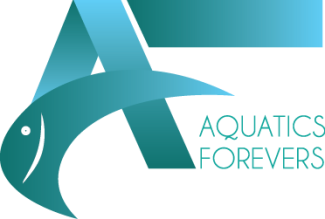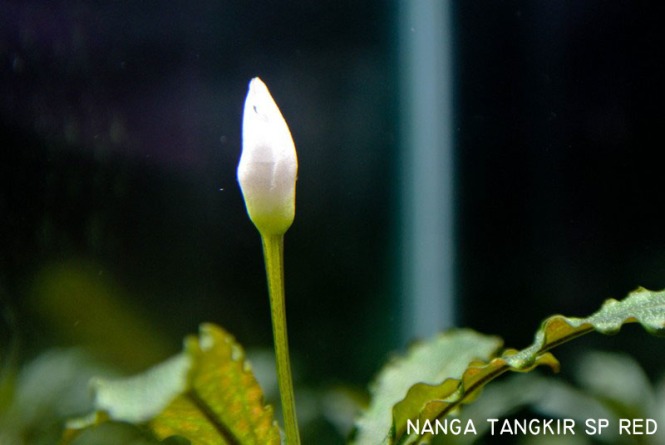Below info was crop from Vasteq (Poland) that I think good info to share.
Quoted from “Vasteq”
The type of wetland plants from Araceae family, adapted to life in swift water. In botany, plants are known since 1858. The genus name has been attributed by the name of Alexander the black horse – Bucephalus. All Bucephalandra are endemic plants growing only on the island of Borneo. They are grown in rivers and streams in swift current, occasionally – on the riverside. On Borneo there are 2 seasons – rainy and hot and sunny. During rainy seasons when the water levels in rivers are rising most Bucephalandra growing on riverside are going to submerge for few months. Blooms mostly under water.
In the appearance Bucephalandra are like Anubias a bit. Rhizomes firmly attach to rocks and crawl on it. The shades of Bucephalandra stems are mostly pink or red. There is evidence that Bucephalandra during stress with changes in conditions could lose their leaves, like Cryptocoryne. Currently, three types of variations are described in the manuals: Bucephalandra gigantea, Bucepholandra Magnifolia, Bucepholandra motteyana.
In sales, these plants are found mainly under the trade names formed in accordance with the region of collected and sometimes formed in accordance with colouration.
In a culture tank Bucephalandra appeared only in 2005-2006 and immediately became very popular among foreign (mostly Japanese) aquarium. The plants are very expensive, but over time will become more affordable.
It should be noted that due to the fact that in nature Bucephalandra grow on rapidly flowing water on rivers so it will be the best to provide the same environment on our tanks. Rapid current of water we could make using an internal filter (pump).
However, as is the case with Anubias and Echinodorus, in violation of the biological balance in the tank (algae outbreak) the leaves could be covered by algae and may be difficult to remove. Plants may die, but from my own experience I can recommend a bath in citric acid solution (one teaspoon and a one and half cups of water). The solution is to weak to damage the leaves but can removes practically any type of algae.
Bucephalandra leaves are very colorful. Depending on the species you can see all the colors of the rainbow. The vast majority of varieties have reddish stems, green leaves and bright shade of blue which is variable depending on the viewing angle. But there are also may type of shiny shades of green (light green), copper, reddish. Bucephalandra plants are mostly small and middle size, but are also a large variety to about 25 cm of height.
They can be grown on paludariums too but the leaves are usually weaker colored, and stiffer. In water tanks they are not difficult plants, but providing them good conditions like: strong light, a lot of CO2 and good fertilizer we can enjoy their faster growth and beautiful colors. Frequently happens situations when I send my plants to people who have Low-Tech aquariums that a newly grown leaves are not so colorful.
Anticipating questions – those shiny spots on the leaves – these are not air bubbles. This is a characteristic of plant from the Araceae family. Depending on the varieties dots are densely or less distributed (for example on a emerge dots are less distributed . But on first submerged leaves shining dots are more visible).
My flickr site: http://portfotolio.net/62693539@N07
In my tank have that parameters:
PH 6.8
GH 14
KH 10
Co2 – a lot
Light 0,6W/L
I dosed EI by this plan:
Macro (recipe for whole month – 12 doses per month = 3 doses per week):
• [3/16 teaspoon KNO3] x 12 doses = 2 and 1/4 teaspoons KNO3
• [1/16 teaspoon KH2PO4] x 12 = 3/4 teaspoon KH2PO4
• [1/2 teaspoon MgSO4x7H2O] x 12 = 6 teaspoons MgSO4x7H2O
mixed in 600ml of water, dosed 50ml 3 times per week
Micro:
CSM+B
(Fe) 7.8%
(Mn) 2.2%
(Cu) 0.1%
(Zn) 0.4%
(B) 1.4%
(Mo) 0.06%
• 1/2 teaspoon mixed in 200ml water dosed 25ml 2 times per week.
Micro and macro dosed alternately: Monday Micro (at night), Tuesday – Macro (at day), and so on. I dont dosing at Friday and Saturday. In Sunday another dose of Macro + change about 40% of fresh water (RO+tap water).
I was being poison after I saw the picture taken by Vasteq and I start searching where I can buy such plant in Penang but eventually my first order was come from a hobbies in Kuala Lumpur. But lately in LFS in Penang I can find such plant available for sales.
Please refer below parameter of my tank. I start collecting Bucephalandra around May 2013 and currently I have more that 30 species in my tank.
Tank parameters: Low Budget Setup
Tank Size:- 90cm*45cm*30cm
Soil:- Benibachi soil + Bactor Base + Mineral Rock
PH 6.5
TDS 90
Co2 – 3 bubble per sec
Light – Using T8 (36W x 2)
More photo will come. Please stay tune,







